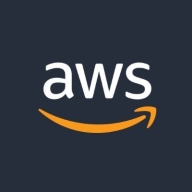

Check Point Security Management and Amazon CloudWatch are key players in the security management category. Check Point seems to have the upper hand due to its comprehensive feature set.
Features: Check Point Security Management offers notable features including comprehensive log management, built-in VPN, and URL filtering, all accessible through its unified SmartConsole for centralized command management. Its strengths are in security management and threat prevention. Amazon CloudWatch integrates seamlessly with AWS services, focusing on real-time monitoring and data analytics capabilities. It excels in extensive metrics tracking and supports AWS environments well with features like Kinesis Data Firehose for extensive log handling.
Room for Improvement: Check Point could improve user experience, especially regarding speed and accessibility of its management console. VPN performance and backup complexity are also noted areas for enhancement. For Amazon CloudWatch, enhancements in real-time monitoring capabilities, better dashboard visualization, and integration with non-AWS services are needed. Improved alert mechanisms and comprehensive reporting would enhance usability.
Ease of Deployment and Customer Service: Check Point supports diverse deployment environments, offering flexibility but also complexity in management and occasional variability in technical support quality. In contrast, CloudWatch integrates efficiently within AWS ecosystems and is generally easy to deploy, yet it may pose challenges with third-party tool integration. Technical support feedback is mixed, needing improvements in speed and knowledge depth.
Pricing and ROI: Check Point is premium-priced, offering strong ROI through advanced security features. Its licensing model supports feature-based scalability but initial costs can be high. In contrast, Amazon CloudWatch's pay-as-you-go model offers cost efficiency within AWS usage but costs can rise with extensive data utilization. Despite perceptions of higher expense, Check Point’s ROI is justified by security improvements and operational efficiencies.
Amazon CloudWatch offers cost-saving advantages by being an inbuilt solution that requires no separate setup or maintenance for monitoring tasks.
In recent years, due to business expansion, knowledge levels among support engineers seem to vary.
The challenge was with drivers due to the size, and we had not provisioned the partition to the right size.
We have partner support that helps us mitigate vulnerabilities reported by our infrastructure team.
Amazon CloudWatch's scalability is managed by AWS.
I sometimes notice slowness when Amazon CloudWatch agents are installed on machines with less capacity, causing me to use other monitoring tools.
Maybe Amazon Web Services can improve by providing a library for CloudWatch with some useful features.
Amazon CloudWatch charges extra for custom metrics, which is a significant disadvantage.
We had to provision the virtual machine twice.
Amazon CloudWatch charges more for custom metrics as well as for changes in the timeline.
Since we are using it extensively, we get significant discounts during procurement.
Being an inbuilt solution from AWS, it saves time on installation, setup, and maintenance.
I like its filtering capability and its ability to give the cyber engine insights.
We can't work without Check Point because it provides the real visibility needed to manage the environment.
It's already helped secure our organization effectively.


Amazon CloudWatch is used for monitoring, tracking logs, and organizing metrics across AWS services. It detects anomalies, sets dynamic alarms, and automates actions to optimize cloud utilization, troubleshoot, and ensure service availability.
Organizations leverage Amazon CloudWatch for collecting and analyzing logs, triggering alerts, and profiling application performance. It's also employed for monitoring bandwidth, virtual machines, Lambda functions, and Kubernetes clusters. Valuable features include seamless integration with AWS, real-time data and alerts, detailed metrics, and a user-friendly interface. It provides robust monitoring capabilities for infrastructure and application performance, log aggregation, and analytics. Users appreciate its scalability, ease of setup, and affordability. Additional key aspects are the ability to create alarms, dashboards, and automated responses, along with detailed insights into system and application health. Room for improvement includes dashboards and UI enhancements for better visualization and customizability, log streaming speed, advanced machine learning and reporting capabilities, pricing, and integration with non-AWS services and databases. Users also seek more real-time monitoring and comprehensive application performance features, and simpler alerts and configuration processes.
What are the most important features?
What benefits and ROI can users expect?
Amazon CloudWatch is implemented across a range of industries, including technology, finance, healthcare, and retail. Technology firms use it to monitor application performance and traffic, while financial organizations leverage it for ensuring compliance and system reliability. Healthcare entities rely on it for maintaining service availability and monitoring data flow, and retail companies utilize it for tracking customer interactions and optimizing server usage.
Check Point Security Management is an advanced security management platform for enterprises. The platform integrates all aspects of security. A single platform manages the entire infrastructure, from data centers to private/public cloud deployments.
Check Point Security Management is a reliable and easy-to-use security platform. It integrates all aspects of your security environment to strengthen the security posture without impairing productivity. The system has a layered policy model. This means the security policy can be separated into layers for network segmentation. Different administrators can manage different policies. The policy layer automates the tasks.
The platform is extensible, scalable, and integrates easily with orchestration systems and change management.
Basic Components of the Infrastructure
The smart console offers several advantages. Changes in security policies and logs can be done with a click. You can navigate from an item within a log to the policy. There are also built-in multi-language support and accessibility features.
1. Security Management Server: The server manages security gateways with set security policies and monitors security events on the network.
The automation server is an integrated part of the management server. The API server is active by default on servers with 4 GB of RAM or more and on standalone servers with 8 or more GB of RAM.
The automation server communicates with the management server the same way as the Smart Console. This architecture allows the same validation errors and warnings to be presented when using an automation session.
The same audit logs generated using the Smart Console are also generated using an automation session. If you have a multi-domain environment, there is only one automation server that monitors all the IP addresses of the multi-domain management server.
2. Security Gateway is placed at the edge of the network. It monitors and filters traffic and enforces security policies.
Logging, Event management, and Monitoring
With Check Point Security Management, logging, reporting, event management, and monitoring are integrated. The platform features widgets and chart templates that optimize visibility. One of the best features is the one-click exploration. This simplifies going from a general overview to specific event details.
Benefits of Check Point Security Management
The unified console also means a single policy for users, data, applications, and networks. The granularity control helps accelerate administration processes. This feature, together with automation, is key to achieving reduced operational overhead. Security teams can automate tasks and even create self-service security web portals with the Check Point Security Management platform.
Threat management is fully integrated, with reporting, logging, and monitoring all in one dashboard. This provides full visibility into the security of the network.
Security Management Suite
The Security Management Suite consists of the following modules:
Reviews from Real Users
A Network Security Engineer/Architect at a tech services company says, "The features we like and find the most valuable are the ways we can manage the policy, create objects, and drag and drop objects in our daily operation. It makes our daily operation on the firewall management much easier than going, for example, to one firewall, then going to the other."
"The management API is the best new feature for me. It allows us to further automate our customers' automated server ordering," says a System Engineer Network & Security at OTTO GmbH & Co KG.
A Senior Infrastructure Services Specialist at St.George Bank Limited adds that "The solution is ideal for use and deployment in a large infrastructure environment."
We monitor all Log Management reviews to prevent fraudulent reviews and keep review quality high. We do not post reviews by company employees or direct competitors. We validate each review for authenticity via cross-reference with LinkedIn, and personal follow-up with the reviewer when necessary.